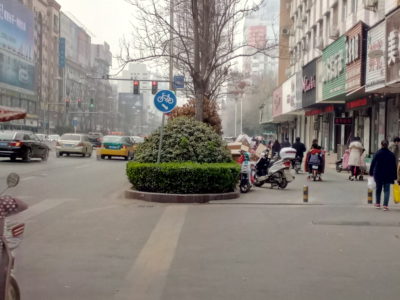It’s always interesting for me to ride my old routes from last year and see the changes. Certain aspects of Chinese culture and landscape might seem immune to change. The rustic villages with mud for streets, the farmers doing stooped labor in their fields, and then I ride by after some months, and it’s completely transformed. Even small villages have building booms, with prosperous farmers or merchants putting up new (sometimes ostentatious) buildings.
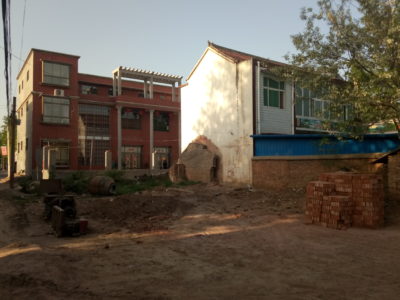
Small towns now have traffic jams since so many are buying cars and the streets are not engineered for them. I’m also seeing more cars on some sections of the levee roads as they try to avoid traffic and the use of demolition debris to fill areas of pavement break-down on the country road, which is caused in turn by increased traffic and heavy loads.
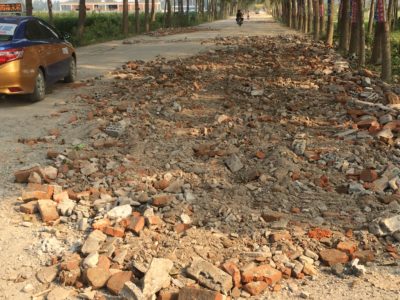
In larger towns and cities, eminent domain is commonly used as neighborhoods are leveled and high-rises go up. In cities as old as they are here, that has been the pattern for sometimes thousands of years. It’s a constant churning of destruction and construction. Sometimes historic buildings are lost, but most of these buildings coming down are not significant. Often they’re villages of concrete boxes packed closely together that got swallowed up in urban expansion.
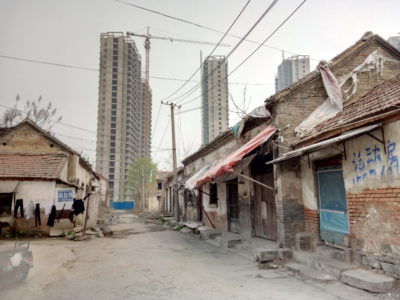
Yesterday a student told me that when he was small his family home with a big yard was taken for highway construction and his family had to live for a year in the school where his father taught, until they had a place to live in a new high-rise. All of this means lots of construction fencing, updating of infrastructure and detours. Often, large billboards featuring futuristic building developments are found at the construction site.
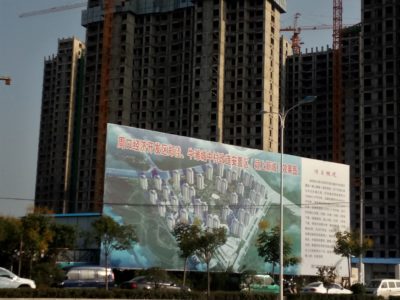
We were shocked to find this fall after we got back that one of our main grocery/department stores is completely closed and ready to come down soon. They have moved across the city into a new building that has pulled Zhoukou into the 21st century.
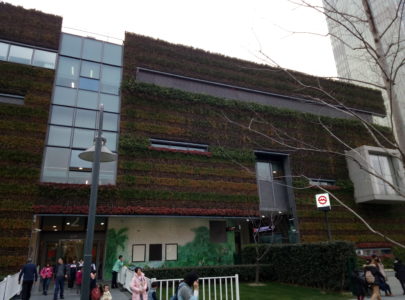
In most of the U.S. excluding downtown Omaha, if an expansion or redevelopment is planned, it doesn’t involve the demolition of large tracts of the urban landscape, at least since major highways have been put through.
Will all of this redevelopment consider other modes of transportation besides cars? To a certain extent yes. All new streets feature frontage roads, where bikes are directed to ride but which are full of bike hazards. It seems to be about preparing for more cars rather than engineering for protection of people riding bicycles, scooters and three-wheelers.
